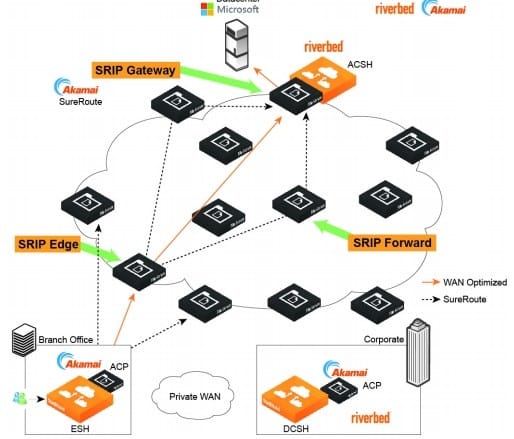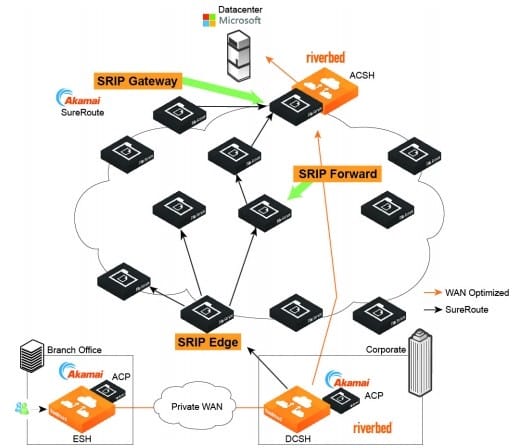Exam Details
Exam Code
:101-01Exam Name
:Riverbed Certified Solutions AssociateCertification
:Riverbed CertificationsVendor
:RiverbedTotal Questions
:253 Q&AsLast Updated
:Apr 16, 2025
Riverbed Riverbed Certifications 101-01 Questions & Answers
-
Question 51:
How many peers can a SteelHead synchronization its data store with?
A. 1
B. 2
C. 3
D. 4
-
Question 52:
In order to achieve SteelHead SaaS optimization two things must happen. First acquire and install a subscription license to enable the feature, and then SteelHead SaaS must be configured. Which statement correctly describes the configuration step?
A. Every SteelHead is configured with a registration key included in a RiOS upgrade.
B. All the configuration is done from the Riverbed Cloud Portal.
C. Every SteelHead is configured with a new license in the standard form LK1-SHSaaS- XXX.
D. Every SteelHead is configured with the same registration key copied from the Riverbed Cloud Portal.
-
Question 53:
Which SteelHead optimization feature provides layer 7 acceleration?
A. MXTCP
B. SDR
C. LZ
D. Optimization blades
E. HSTCP
-
Question 54:
What is the remote port used for on a Riverbed hardware appliance?
A. Remote control using a modem or ISDN device
B. IPMI "lights out" Remote control management
C. Export of netflow statistics
D. SteelFusion Edge device connection
E. Data store synchronization
-
Question 55:
Which of the following correctly describe the two topology deployment modes of SteelHead SaaS? (Select two.)
A. In direct mode, the cloud optimized traffic is encapsulated at the branch-side SteelHead appliance.
B. Direct mode cannot be used if the internet traffic exit points is centralized at the customer data center and not available from the branch.
C. In backhaul mode the cloud-optimized traffic is encapsulated at the data center but the SSL optimization starts at the branch.
D. Backhaul mode allows to optimize traffic to the cloud from the data center without the need of a branch SteelHead.
-
Question 56:
Which SteelHead Mobile feature can dynamically disable client optimization when in an office equipped with a local SteelHead?
A. Location Awareness
B. Data store synchronization
C. Fixed-target rules
D. Branch WarmingE, Connection Forwarding
-
Question 57:
You have a SteelHead with paths over a public and a private network. You want to encrypt the traffic which goes via the public network. Which are the relevant SteelHead configuration requirements? (Choose two.)
A. The peer SteelHead must be marked as a Cloud SteelHead in the local SteelHead peering table.
B. The network must be set to 'public' by ticking the 'Public Network' box in the configuration.
C. A SteelCentral Controller for SteelHead must be used to push the secure transport configuration.
D. The In-Path IP address of the SteelHead must be in public address space.
-
Question 58:
Which ethernet network cable type can you use when connecting your SteelHead appliance to a switch when all ports are hard coded to 100/FULL?
A. Crossover
B. It doesn't matter
C. Straight
-
Question 59:
What files can be gathered from the SteelHead which would be useful for troubleshooting problems with QoS configuration? (Choose two.)
A. TCP Dump
B. System Dump
C. Core Dump
D. Process Dump
-
Question 60:
Which authentication methods are available to secure the SteelHead appliance? (Choose three.)
A. Kerberos
B. RADIUS
C. Local password database
D. TACASS+
E. NTLM
Related Exams:
101-01
Riverbed Certified Solutions Associate201-01
Riverbed Certified Solutions Associate - Network Performance Management299-01
Riverbed Certified Solutions Professional - Network Performance Management499-01
Riverbed Certified Solutions Professional - Application Performance Management501-01
Riverbed Certified Solutions Associate - Hyper-converged Branch599-01
Riverbed Certified Solutions Professional - Storage Delivery Exam810-01
RCPE Certified Professional Network & Infrastructure Visibility830-01
RCPE Certified Professional WAN Optimization
Tips on How to Prepare for the Exams
Nowadays, the certification exams become more and more important and required by more and more enterprises when applying for a job. But how to prepare for the exam effectively? How to prepare for the exam in a short time with less efforts? How to get a ideal result and how to find the most reliable resources? Here on Vcedump.com, you will find all the answers. Vcedump.com provide not only Riverbed exam questions, answers and explanations but also complete assistance on your exam preparation and certification application. If you are confused on your 101-01 exam preparations and Riverbed certification application, do not hesitate to visit our Vcedump.com to find your solutions here.

